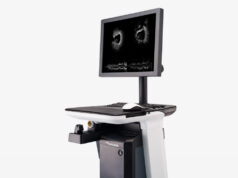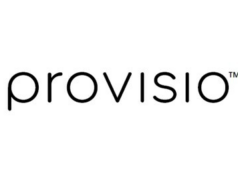
“I consider intravascular ultrasound (IVUS) to be essential equipment in venous interventions,” Rick de Graaf (Clinic of Friedrichshafen, Friedrichshafen, Germany) told viewers of LINC 2021 (The Leipzig Interventional Course; 25–29 January, online). De Graaf was speaking during a session on endovascular procedures for the deep venous system, aiming to answer the question, ‘Is IVUS a fancy tool, or relevant for clinical outcomes?’
“It is hard to say that [IVUS] is fancy,” de Graaf began, noting that this is technology is essentially “just an ultrasound probe on a catheter”. In venous interventions, he noted, the technology is mainly used to indicate stenosis, determine a healthy stent landing zone, to evaluate after stenting, and evaluate after thrombectomy to see if there is any residual thrombus.
Regarding data, de Graaf detailed that there are a number of papers on using IVUS for diagnosis and procedural planning, as well as recent data from the Arnsberg registry, headed by Michael Lichtenberg (Karolinen Hospital, Arnsberg, Germany), that showed IVUS to be an effective option to reduce radiation during deep venous obstruction (DVO) interventions.
De Graaf then summarised the benefits of IVUS in venous procedures, detailing that the technology can identify “subtle yet significant” pathology—even more so than magnetic resonance (MR)-venography, in his view—gives “instant and accurate” three-dimensional (3D) representation, reduces radiation, as different angulations are not necessary and the imaging is more efficient, and reduces contrast.
Moving on to when and how to use IVUS in venous practice, de Graaf expressed his belief that to not use it at all would be “dangerously close to malpractice”. He elaborated: “Sooner or later you are going to miss something, and the patient will suffer.”
De Graaf told the audience that he has IVUS present in all venous cases, because “you never know what you are going to miss,” he said. De Graaf noted that some physicians state they only use IVUS when they need it, but likened this to only wearing a seatbelt when it is needed.
In terms of experience, de Graaf detailed that he started performing venous procedures in 2009 without IVUS, due to the cost. However, he became convinced of its importance after several stent occlusions proved to be related to the lack of IVUS. “I now use IVUS in every venous case,” he reiterated.
De Graaf outlined a specific venous case in which IVUS was crucial. A patient presented with iliac vein thrombosis, but also a distal vena cava thrombosis, he explained. While the speaker noted that he cleared out the iliac vein and stented it, IVUS then showed that there was still thrombus in the inferior vena cava (IVC), which could not be left. “I tried thrombectomy and suction with a large sheath, but I did not get it out,” he relayed. De Graaf then decided to use live imaging with IVUS and was able to remove the thrombus successfully under IVUS guidance.
“IVUS obviously has significant value guiding venous interventions, and real-time IVUS offers further possibilities,” de Graaf concluded.











